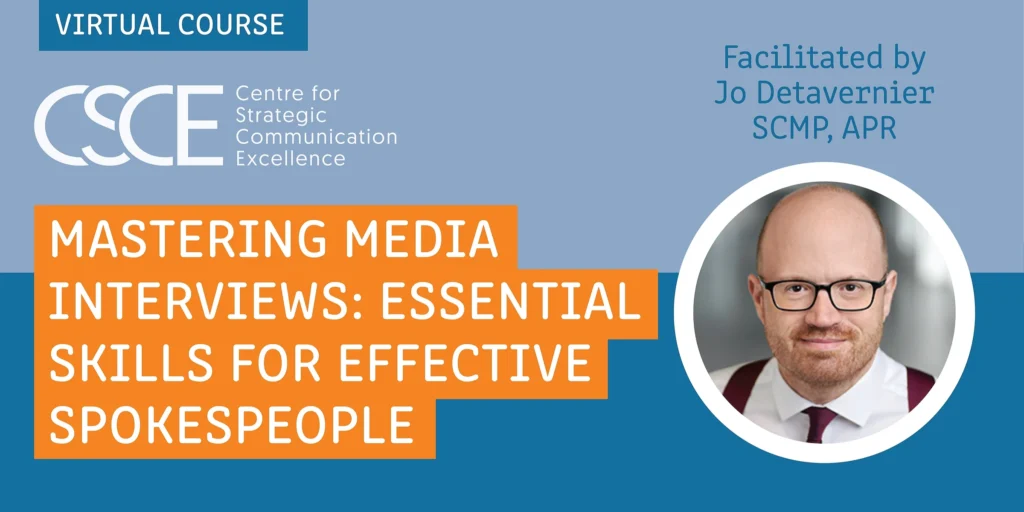Last week we shared information about the trend toward the convergence of marketing and communication, two professions that have operated independently within organisations for decades. We presented research findings and offered some thoughts about what this new reality could mean to communication and marketing professionals.
To no one’s surprise, not only is there a move toward convergence of marketing and communication, integration is also occurring within communication disciplines. Part two of our series on the Future of the Communication Professionlooks at this trend and how strategic communication is quickly becoming a critical business asset.
Fold in Gently
Think of integration like a recipe for an Angel Food cake. First you carefully measure and mix the wet ingredients. Then you carefully measure and mix the dry ingredients. And finally you carefully combine them together before baking them at the right height and the right temperature for exactly the right amount of time.
That’s what’s happening in the communication profession. Internal communication and social media have joined the corporate communication fold, where media relations has also taken up residency. Event management, stakeholder engagement, corporate social responsibility and other functions are moving in to create a powerful, integrated communication masterpiece.
There is a common strategy aligned with business needs. Research and audience analysis is shared, key messages are consistent and the binding ingredient, a jointly delivered implementation plan, means that communication is firing on all cylinders. Instead of operating in silos, communication disciplines are moving under one umbrella and driving in the same direction at the same time to deliver far greater business results.
In principle, this may sound like a no-brainer, but in practice those who have worked in the profession for any number of years will resonate with the embarrassing truth of independent functions, also know as “the left arm doesn’t know what the right arm is doing.”
Who Says What?
The USC Annenberg School for Communication and Journalism has conducted eight studies over ten years to track and analyse the interrelationships between PR/Communication and organisational mission, strategy, character and management.
The latest Generally Accepted Practices (GAP) survey was done late in 2014, and placed more emphasis on large versus very small organisations. Over 1,000 responses were received. Answers were tightly screened for status and level of responsibility. Key findings include the following:
- There is a greater degree of integration between PR/Communication and other departments and among various communication functions such as advertising, public relations, corporate communication, marketing, social media and media relations to name a few.
- CEOs (among publicly-listed and private companies) believe more strongly that communication contributes to organisational and financial success.
- Communication departments use specific metrics for measurement and evaluation including influence on corporate culture, reputation, employee attitudes and morale, share of voice, and stakeholder awareness and opinions.
- Outside agencies are used to provide strategic insight and experience, complementing internal capabilities. They have resources in markets or geographies where the client needs them.
- Corporate Communication and Reputation is included among the organization’s primary responsibilities.
- Whether centralised or decentralised the entire organisational structure is described as being more effective, employs more communication professionals and has increased budgets.
The 2014 GAP report shows that Communication generally reports directly to an executive in the C-suite, and increasingly to the CEO (a 16 percent increase in 2014). In every case, the communication department also has a dotted line reporting relationship to other functions.
The GAP Survey is a highly respected source of information supported by major communication associations such as The Arthur Paige Society, The Institute for Public Relations, the Public Relations Society of America and the International Association of Business Communicators. A global framework to capture information about the profession from all corners of the world was developed in partnership with the Global Alliance for Public Relations and Communication.
Who Else?
The integration of communication disciplines was the focus of a major study by the Tuck School of Business at Dartmouth for the National Investor Relations Institute’s Centre for Strategic Communication. The research concluded that to be successful in today’s business environment, companies need to integrate their communication efforts.
The primary research, consisted of over 50 interviews with CEOs, CFOs, senior investor relations and corporate communication professionals in 10 companies across a number of industries. The work is supported by two in-depth case studies of best practices at The New York Times Company (“The Times Company”) and FedEx. Findings were subsequently published in Sloan Management Review.
The report states that more often than not, companies fail to recognise the importance of an integrated corporate communication function. “When a company places each sub-function of the corporate communication area (investor relations, media relations, internal communication, etc.) in its own “silo” each with its own agenda and set of messages to deliver to separate target audiences, and interaction among these groups is merely voluntary, it does not have an integrated function.”
It goes on to say, “While integrating corporate communication has always been a good idea, certain catalysts in today’s business environment make it more of an imperative than an option.” According to the research key catalysts include the legal and regulatory environment, sophisticated, overlapping constituencies, organisational growth and complexity and technology.
While few argue with the benefits of a fully integrated communication function, one of the most challenging questions is how to get from here to there. Integrated doesn’t mean centralised. In fact, in large organisations full centralisation is next to impossible. But the core needs to be there: common research, one strategy, one voice, one measurement plan, and consistency on all fronts.
What Does it Mean?
Convergence and integration are on parallel tracks, and that means change and lots of it for the profession and communication professionals. With a growing reputation as a critical business driver among CEOs and senior executives, opportunities to build a career in a number of disciplines and with an arsenal of knowledge and information as close as the computer keyboard, the possibilities are endless and the future is bright.





